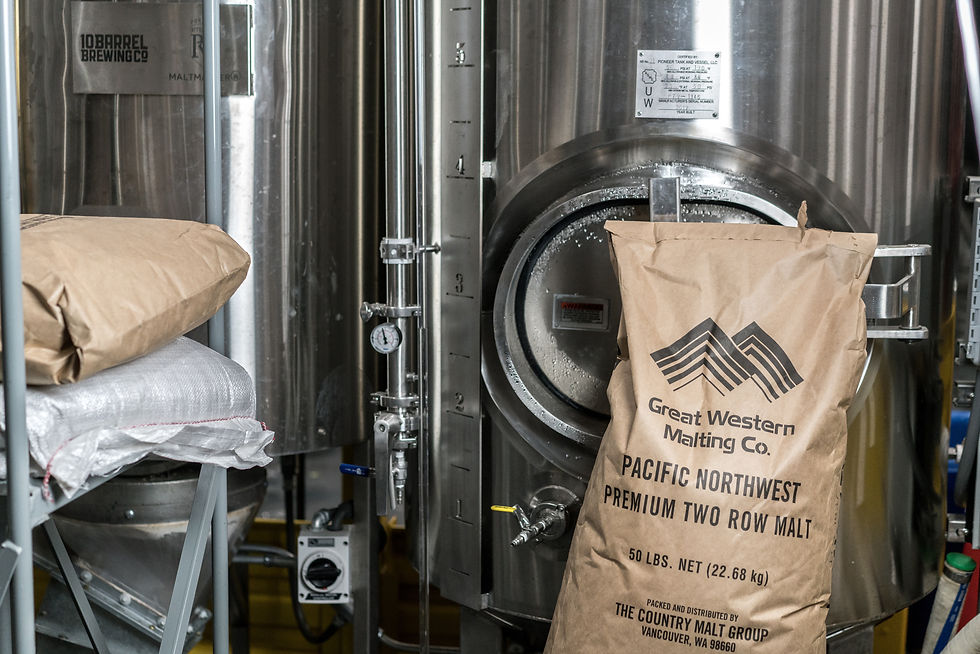Beer Industry Advertising
- Dominic Cincotta
- Mar 30, 2021
- 4 min read
It used to be the Bud Bowl... What is it now?
Symbols and signs have been a key element of brewing advertising since the 1600’s. Emblems called “tapping signs” such as malt scoops, mash forks, and beer tumblers were used to identify where brewed and malted beverages were available. Perhaps the most famous tapping symbol is the six-pointed star or the Star of David appearing in the middle ages in Nurnberg. This is the oldest guild emblem for brewers in history. It is hypothesized that this star symbolized protection against bad luck and demons as well as serving as the earliest beer advertisement and sign of brand identity. This demonstrates the close connection between religion and a mythos early in the history of this industry and its advertising.

Van Munching’s 1997 book, Beer Blast, is a comprehensive study of advertising and branding in the beer brewing industry. He explores the impact of industry growth and resulting segmentation on advertising dollars spent. Beer Blast delves into the roles of advertising agencies and their impact on the terminology used in brewing. Van Munching also shows the escalating investment of breweries in advertising has helped them to distinguish from competition. Outside of the competitive role of advertising, Van Munching identifies two key issues that belong to beer and advertising. They are consumption-age related issues and misleading advertising. These are also the key issues that the Brewers Association Corporate Social Responsibility (CSR) code attempts to resolve.
The Brewers Association outlines a code of ethics for their members in reference to CSR. These guidelines are as follows:
Beer advertising and marketing materials should not:
Portray, encourage, or condone drunk driving.
Depict situations where beer is being consumed excessively, involuntarily, as part of a drinking game or dare.
Portray persons lacking control over their behavior as a result of consuming beer.
Portray or imply illegal activity as a part of drinking beer.
Make representations about unsubstantiated health benefits.
Claim or represent that individuals cannot obtain social, professional, educational, athletic, or financial success or status without beer consumption.
Claim or represent that individuals cannot solve social, personal, or physical problems without beer consumption. (http://www.brewersassociation.org/pages/business-tools/marketing-and-advertising-code)

CSR is a key issue facing the brewing industry (Jernigan and Wedekind 2008, Wolburg 2005) and more recently, research around brand identity and advertising in the brewing industry has centered on CSR (Nelson 2005, Jernigan and Wedekind 2008). Kechiche and Soparnot (2012) define CSR in terms of a set of factors as it is related to SMEs. According to these authors, CSR is related to an organization’s, “…obligation to take into account the impact of a company’s activities upon its human, social and ecological environment, and in particular to see responsibility as stretching beyond responsibility to a company’s shareholders” (p. 97). Corporate social responsibility in the brewing industry stems from the epidemic of underage drinking and over consumption. The studies of CSR find that the larger the firm, the more focused the CSR communication. These large firms focus much of their advertising on informing the public of the dangers of underage drinking, drinking and driving, and overconsumption. Large breweries do this through using phrases like “drink responsibly” and interactive tools such as “date of birth” registers on their websites. Rolland and Bazzoni (2009) found that CSR is becoming a key brand identity attribute and this is fulfilling a rising societal demand.
In a 2004 article by Clemons, he identified the importance of resonance marketing or marketing that keys on the consumers’ wants. Resonance marketing works by expressing the core values of a business. This strategy allows consumers to engage and build a relationship that is mutually beneficial to the consumer and enterprise entity. The website of a brewery provides a brewery with an opportunity to engage in these tactics through accurate and proactive representation of brand identity including a brewery’s core values. In creating this resonance with consumers, SME brewers are able to fend off the collusion. Yao (2012) finds that purposely constructed and competitively formed advertising, such as resonance marketing, can fend off the factors that create a scenario prime for collusion.

The credited founder of the craft brewing movement in the United States, Sam Calagione, founder of Dogfish Head brewery in Delaware, published a book called Brewing Up A Business in 2005. In this book, he discusses at length the importance of advertising in the brewing industry. He also discusses how the SME brewery will never compete dollar for dollar with the large brewing industry. Therefore, it is imperative that the SME brewer be very concise in how and where they spend money in advertising. Calagione explains that the internet and webpages can provide the SME brewery a space to be competitive when he claims, “The internet is the great marketing leveler. Small companies can have a big presence on the web, and big companies can have a small presence” (p. 105). The internet and webpages also allow these breweries space to define their brand identity through a conversation with the consumer instead of telling the consumer what they should believe, which harkens back to resonance marketing.
- This is an excerpt from my 2014 Robert Morris Doctoral Dissertation




Comments